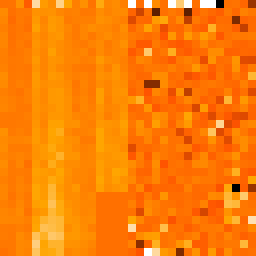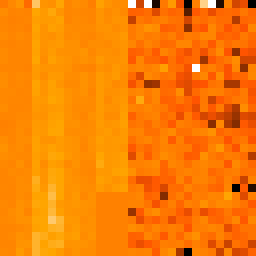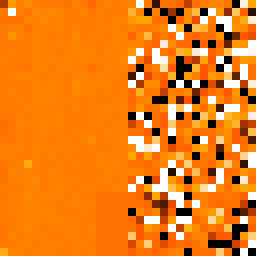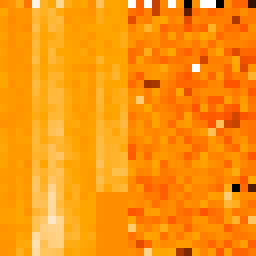Results
Two normalized SED ICs was created and are shown below. The patch of sky chosen for both of these observations was zodi_14a.
 Reduced MIPS299a data normalized using side A. For image section [5:10,5:25]: Mean = 1.336,
RMS = 0.484.
Reduced MIPS299a data normalized using side A. For image section [5:10,5:25]: Mean = 1.336,
RMS = 0.484.
 Reduced MIPS299b data normalized using side A. For image section [5:10,5:25]: Mean = 1.440,
RMS = 0.631.
Reduced MIPS299b data normalized using side A. For image section [5:10,5:25]: Mean = 1.440,
RMS = 0.631.
 The ratio of MIPS299b / MIPS299a. For image section [5:10,5:25]: Mean = 1.084, RMS = 0.253.
The ratio of MIPS299b / MIPS299a. For image section [5:10,5:25]: Mean = 1.084, RMS = 0.253.
This SED illumination correction has been incorporated into the Campaign R
calibration files of the MIPS DAT and is the average of the two ICs obtained
during the campaign (Mean = 1.388, RMS = 0.537 for the image section
[5:10,5:25]).
Conclusions
The two illumination corrections determined in Campaign R are in resonable
qualitative agreement.
Significant pixel-pixel variations do exist between the ICs and between the
average Campaign R SED IC and other SED data obtained in this campaign.
For example, pixels [4,6] and [4,12] both have low values in the ICs that
are not apparent in the data for MIPS145, resulting in two "hot" pixels
in the reduced data. In other words, the SED illumination correction does
not represent a time-independent correction to the undispersed stim flash
illumination pattern. SED observations are likely to be limited by these
residual pixel-to-pixel time-dependent variations, although an average of
a large number of illumination corrections may mitigate some of these effects.
Output and Deliverable Products

Actions Following Analysis
No further actions are required.